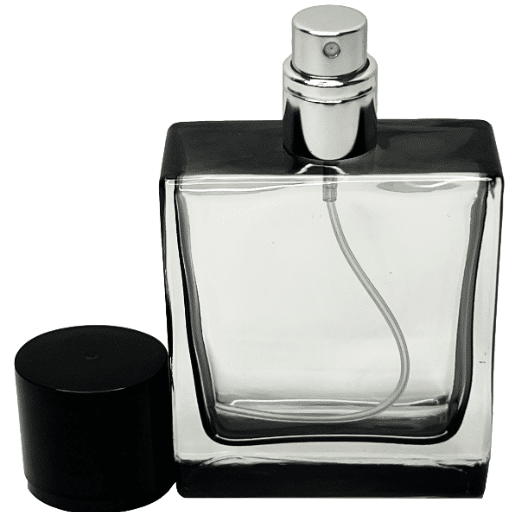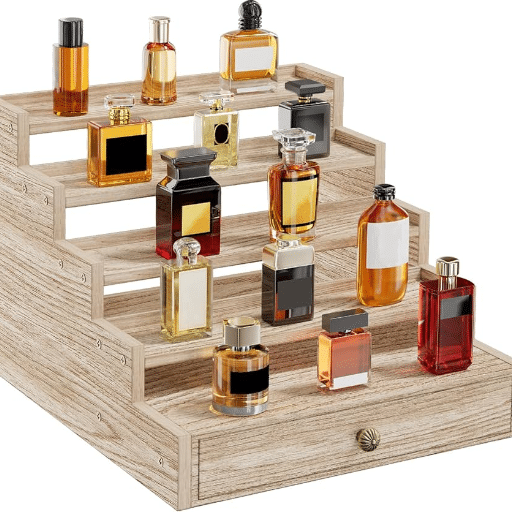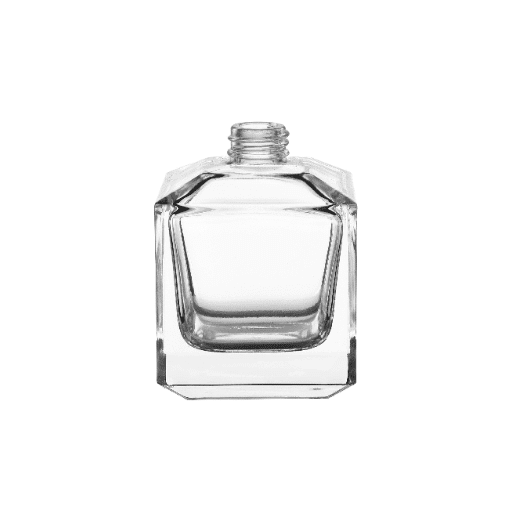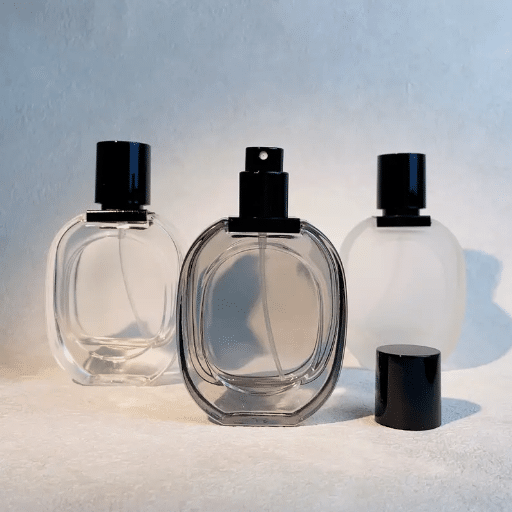There is nothing more frustrating than feeling disconnected from your favorite fragrance, which often occurs when the spraying mechanism of your perfume stops working. The nozzle may be clogged, broken, or missing altogether; however, there are definitely ways to salvage this fragrance so that its quality is not compromised. In this guide, you will explore simple and effective techniques to get perfume straight from the bottle while still making the best use of whatever remains in there. From step-by-step procedures to handy trick tips, we’ll tackle this common problem with the perfume dispenser with ease and confidence. Get set to achieve that delight with a saved aroma!
Understanding Your Perfume Bottle

Perfume bottles are typically designed to serve not only functional but also decorative purposes. These are the bottle, the atomizer or spray, and, sometimes, a cap or a decorative embellishment. The most important part of this structure is the atomizer, as it helps spread perfume in the form of a thin mist evenly over the surfaces. These bottles are typically made of glass, as this material helps maintain the scent and prevent any reactions. Once you understand these parts of the bottle, you will know how to extract perfume from the bottle without using a spray and avoid wasting the cologne.
Types of Perfume Bottles
There are various types of perfume bottles, including classic glass bottles, roll-ons, atomizers, refillable bottles, splash bottles, perfume pens, and solid perfume containers.
| Type | Material | Feature | Use Case |
|---|---|---|---|
| Glass Bottle | Glass | Durable, clear | Everyday use |
| Roll-On | Glass/Plastic | Roller top | Travel-sized |
| Atomizer | Glass/Metal | Spray mechanism | Fine mist |
| Refillable | Metal/Glass | Reusable | Eco-friendly |
| Splash Bottle | Glass | No nozzle | Classic style |
| Perfume Pen | Plastic/Metal | Pen-like | Portable |
| Solid Perfume | Metal/Compact | Semi-solid balm | On-the-go |
Common Issues with Spray Mechanisms
- Nozzle Clogging Issues – The nozzle can also become clogged due to residues or other buildup, preventing uniform distribution.
- Nonuniform Aerosol Output – This is not controlled, which may result in large droplets rather than a fine mist.
- Product Leakage – When the gasket surrounding the nozzle or container is damaged, it may cause leaks, resulting in juice wastage.
- Low Pump Pressure – A weakened pump mechanism can prevent the user from spraying high-pressure mist.
- Trigger Failure – Repetitive usage may cause the trigger to wear out or even damage the pump.
Why You Might Need to Transfer Perfume
There are several practical reasons why it is necessary to put perfume in a small or other size-friendly container. To begin with, traveling with a large or unstable perfume bottle can be quite a challenge, as it is likely to break, which is where a handy atomizer comes into play due to its compact size. It also offers the benefit of transfer that enables a behavioral choice of any desired amount of the perfume while saving the remaining amount in the primary container. This comes in handy for perfume collectors, especially those who prefer to use various perfumes in small quantities or do not want to carry multiple full-sized bottles of perfume at a time. Lastly, there are situations where sharing perfume with a relative or friend becomes a habit, practiced with less contact, and the bottle remains clean, all thanks to mini containers that are easily transferable.
Tools Needed for Transferring Perfume
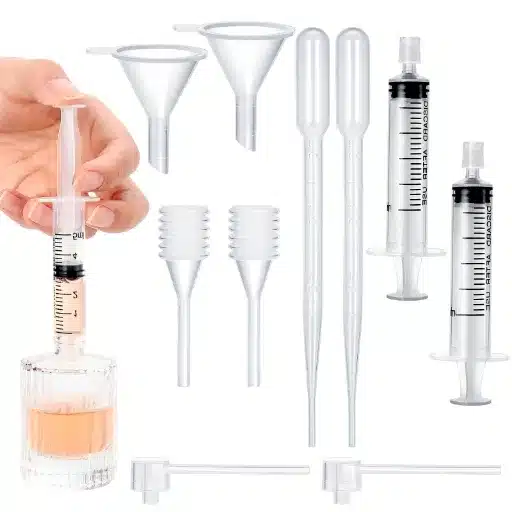
If you want to transfer your fragrances around without much hassle, you are going to need these tools:
- Small atomizer bottles or travel spray bottles
- Syringe or a dropper to help transfer
- Optional: funnel for wide-mouth bottles
- Cleaning tissue or rag, in case of any spillages
Pipettes: Uses and Benefits
There are specifically constructed tiny tubes known as pipettes, whose function is strictly to facilitate the movement of liquid from one container to another. They explain how to get perfume out of bottle without spray and why, since moving anything by displacement is very difficult. Specialized perfumes, or those that come with incense in the form of powder, are very costly, hence the need for particular precision. When pipettes are employed, the raised liquid does not come into contact with the outside environment; therefore, no mixing occurs, and drawing and disposal co-occur. Furthermore, one can clean them and reuse them in the future because they are recyclable, thereby avoiding wastefulness in terms of both money and materials. Principles of transporting perfumes apply whether taking only a tiny portion, e.g., for a small-sized container or for an experiment’s blending several perfume variants within the container.
Funnels: How They Assist in the Process
Whenever you fill or decant perfumes in the bottles, use of funnels is recommended to ensure no wastage and proper filling. You may wonder why perfume, being a fluid, is so cherished that spillage is out of the question. Particularly for perfume bottles with small necks, such containers are very tricky to fill without the use of a funnel. However, succeeding would probably mean missing the right mark and topping off. Funnels, on the other hand, come in various sizes and a wide range of materials that most people can use. The use of a funnel helps not only to speed up the process but also to preserve the perfume from unwanted spillage or any kind of foreign substance that might find its way inside the bottle.
Droppers: Safety and Precision in Perfume Transfer
When it comes to ensuring accuracy and safety during perfume transfers, tools such as droppers cannot be overlooked. They comprise a long, thin pipette structure at the bottom and an elastic bulb at the top, enabling effective regulation of liquid volumes. Such precision serves to eliminate waste and spills, which is crucial when handling costly or intense fragrances. Moreover, droppers aid in reducing contamination by ensuring minimal or no contact between the liquid and other parts of the surface. Their convenience and efficiency promote their application in both personal and professional perfumery.
Step-by-Step Methods to Get Perfume Out of a Bottle
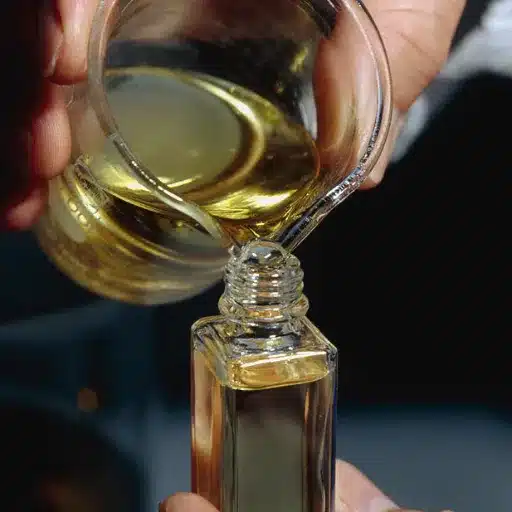
- How to Use a Dropper: For the first step, take a clean dropper and insert it into the neck of the bottle. Then, apply minimum pressure to the bulb to dispense the perfume. This step ensures the accuracy of the applied dose while preventing wastage.
- Slowly tilt and pour the contents from the bottle: In a clean space, hold the perfume at an angle, being careful not to spill the contents as you pour it into a fresh vessel or an applicator. Prevent leaks or overpouring by being cautious.
- Use of the funnel: When transferring perfume, one may opt to use the narrow end, known as the funnel, to deposit the liquid into a new container. This method is recommended when decanting perfume to avoid mess.
- Aim a Spray Bottle’s Nozzle at a container: If the perfume bottles come with spray tops, position them very close to the clear containers and spray the perfume out. This method is advised when dealing with small volumes or in case of larger volumes, more time will be needed.
- Detach the nozzle spray: Twist the spray nozzle gently and pull it out if it’s needed. A dropper and/or a small spoon can be dipped inside the bottle because there will be no restriction on accessing the liquid inside.
- Apply a syringe: Something as simple as a syringe may help to draw the perfume out of the bottle quite nicely, as it allows you to carefully pull the contents out, for example, without shaking.
- Invert the bottle: This means turning the container upside down and allowing the contents to come out a little at a time into the desired vessel. Cooling may be necessary for thick perfumes to ensure this works effectively.
Method 1: Using a Pipette
Instructions on how to use a pipette to get perfume out of a bottle and into a vial will be as follows:
- Get the Pipette Ready first: Wash the pipette thoroughly to ensure that no detergents or other foreign matter remains. This advice is expected to avoid any potential invasion of the perfume essence.
- Place the Pipette: Carefully place the tip of the pipette inside the opening of the bottle.
- Gather the Perfume: First, compress the pipette’s balloon to create a vacuum, and then slowly release the balloon, allowing the liquid to be drawn into the pipette.
- Port the Perfume: Extract the pipette from the liquid with care, and also distribute the perfume into a fresh container by compressing the pipette’s bulb one more time.
- Do it Again if Necessary: If the level of perfume is still insufficient, perform the same procedure until the other volume of perfume is transferred.
Such a method is both valid and convenient when working with perfumes that require supplementation in small portions.
Method 2: Pouring with a Funnel
- Select the Funnel with the Proper Size: It is preferable to choose a designed dispenser that is appropriately installed and suits the mouth of the bottle into which you are decanting the perfume.
- Also, maintain the Funnel for Easy Maintenance: Position the funnel in such a way that it will not slip off the bottle.
- Do Not Let it Flow Freely: Add the perfume amount into the funnel scope, but do not let it overflow.
- Keep a Watchful Eye on the Flow: Pay attention to the liquid as you pour it into the container.
- Remove the Funnel and Wash It: After use, wash the funnel thoroughly to ensure it remains clean and free from contamination or dirt accumulation.
This mode of operation can also be used when there is a need to pour a quantity of perfume from the bottle or to extract perfume from a bottle without using a spray.
Method 3: Utilizing a Dropper
When a minimal amount of perfume is needed, a dropper works perfectly for this purpose since it provides ease of use. Here is a step-by-step guide to do so:
- Prepare the Dropper: Clean and dry the dropper according to its conventional use before each use.
- Extract the Perfume: Gently squeeze the bulb before inserting it into the container and draw the perfume with it.
- Transfer the Perfume: Gently squeeze the bulb to release the perfume drop by drop into the designated container until the required level is reached.
- Inspect the Process: Check the volume of liquid to be transferred to ensure it does not exceed the limits or spill.
- Clean the Dropper: Ensure you rinse the dropper with hot water or clean it with another suitable mechanism after use.
This technique minimizes waste and prevents unnecessary usage, such as how to get perfume out of a bottle without the spray effect.
Practical Tips for Safe Perfume Transfer
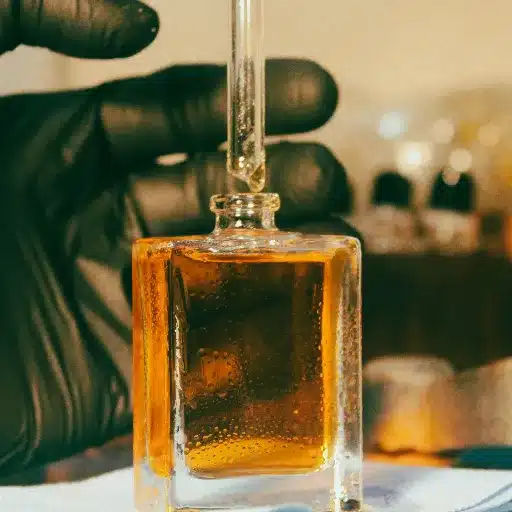
- Work in a clean and organized area to prevent contamination.
- It is necessary to sterilize all tools and containers before beginning.
- Handling the bottle of perfume and the dropper must be done with care to avoid a baboon.
- The hand should be stable to compete against the process of transfer in the droplets, preventing wastage.
- After the perfume is transferred, store it in a location away from direct sunlight and extreme temperatures.
Avoiding Spillage During Transfer
Transferring perfume often results in spillage if a dropper or a syringe is not used. First, make sure the container you are pouring the perfume into is placed on a stable surface. We recommend doing this to avoid spillage or any accidents. This would not be possible if a lot of force were used to prevent the bottle from breaking. Additionally, a cloth or tissue is convenient in case anything spills at any time. In general, patience pays, especially when it comes to removing perfume from a bottle without spraying it all over.
Minimizing Air Exposure to Preserve Fragrance
To prolong the life of your perfume and preserve its scent, store it in an airtight container at room temperature whenever possible. Air that enters the bottle facilitates the oxidation process, thereby causing the fragrance’s components to degrade. After every use, the bottle lid should be tightly closed and it should not remain open for a long time. When the fragrance is low, do not wait until the bottle is empty; fill smaller vials instead to minimize the amount of air the fragrance remains in contact with. The use of containers with a pump or screw cap helps release perfume from a bottle without spray and ensures the fragrance stays as fresh as possible for as long as possible.
Ensuring Cleanliness to Prevent Contamination
It is essential to prioritize cleanliness to preserve stored fragrances. Always ensure your hands are clean before touching perfume bottles to prevent oils, cleaners, or bacteria from contaminating the nozzle or bottle. The outer part of the fragrance bottle should be wiped regularly with a clean, slightly damp cloth to prevent dust from accumulating and potentially damaging the container. In any case, if the containers are decantable or disposable, provision should be made to clean them appropriately before loading the perfume. This is because the scent of the perfume may be affected by the foreign bodies in the bar, and thus it needs to be handled carefully to avoid this from happening.
Creative Ways to Repurpose Extracted Perfume
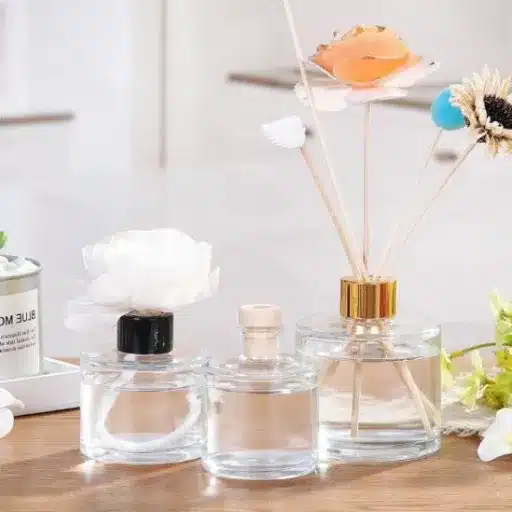
Being able to use the leftover fragrance from a bottle of perfume can have its uses and can be fun as well. Use it as an air freshener by mixing it with water and spraying it around the home to freshen the air. It is, however, possible to make notchless lotions or body massage oils even more intriguing by incorporating perfumes into them as well. Furthermore, stationary or fabric items, such as handkerchiefs or scarves, can be lightly scented by applying a few drops of the scent to them. Your scent can also be uniquely added to candles and potpourri, making the fragrance more intense than it would be otherwise. These strategies enable you to use the remaining perfume efficiently after use.
Decanting into Travel-Friendly Containers
Toting around hefty perfumes isn’t always realistic, but decanting is a stereoscopic and easy-to-comprehend method to carry fragrance. If you intend to use your perfumes while traveling, don’t bring the bottles in their original form; instead, consider using a mini refillable atomizer or a spray bottle designed explicitly for perfume. Start by decanting the liquid into a container with a narrow mouth using either a funnel or a pipette for spillage purposes. The travel container, especially designed for this purpose, should be tightly closed after filling to prevent the liquid content from leaking out or losing its fragrance. It means you can supplement your fragrance with no fear of carrying heavy baggage.
Making Personalized Room Sprays
From my experience in making personalized room sprays, I equip myself with a fresh spray bottle and I mix my desired scent ever so slightly with the distilled water. To prevent the smell from evaporating in a short time, I also like to use a small quantity of alcoholic substances, such as vodka, so that the scent can be dispersed more effectively. I shake the bottle contents very well and then spray it into the air to see how it turns out, and if necessary, perfect the formula. I love this because it lets me collect all my used perfume into classic air fresheners, which take a little time to make or figure out how to extract perfume from a bottle without a spray.
Incorporating Perfume into DIY Beauty Products
Perfume is often considered one of the essential accessories; it could also be a lovely addition to self-made beauty products. Let’s start simple. You could add some drops of the super-tester fragrance to a neutral body lotion and let it absorb. You’ve already created your own scented moisturizer! Alternatively, you could learn how to extract perfume from a bottle without a spray and incorporate the scent into a body scrub, which can be made by adding sugar, coconut oil, and essential oils. Before applying anything to your skin, exercise caution and use only skin-friendly scents when creating products. They say beauty has no boundaries, and that is indeed true of the most mundane things, such as perfumes, which can transform everyday items into luxuries.
Reference Sources
-
Simple Tricks: How to Get Perfume Out of Bottle – daxin – This article provides practical tips, including using minimal heat to loosen the nozzle.
-
Reddit Discussion on Extracting Perfume Without Destroying the Bottle – A community discussion with suggestions like using a syringe to extract perfume.
-
Quora: Fixing a Perfume Bottle Without a Nozzle – Offers advice on handling broken nozzles and alternative methods.
-
Amazon Product: MUB Perfume Dispenser Pump – A product designed for extracting and transferring perfume, with user instructions.
-
Fragrantica Forum: Applying Fragrance Without a Sprayer – A forum thread discussing methods like using syringes to transfer perfume into smaller containers.
Frequently Asked Questions (FAQs)
How to Get Perfume Out of Bottle Without Damaging It?
To remove the perfume from the bottle without damaging it, use a pair of pliers to grip the crimped top of the bottle. Pry off gently the nozzle to avoid damaging or cracking the glass or causing leakage. Always be careful and never apply excessive force to any of the elements to prevent accidents.
What Tools Do I Need to Decant Perfume from a Glass Bottle?
You will find a safety pin or a pair of pliers to decant perfume from a glass bottle. These tools will help you raise the top of the bottle to access the fragrance inside. Additionally, a clean perfume travel bottle or an empty perfume vial is required to store the transferred fragrance.
What is the Step-by-Step Guide to Get Perfume Out of a Fragrance Bottle?
This is a step-by-step method that explains how to remove a perfume from a fragrance bottle by gently prying up the top of the bottle with pliers, taking care not to use excessive force. Once the nozzle is removed from the bottle, a small funnel or dropper may be used to transfer the contents from the perfume bottle into a new vial or atomizer.
How Can I Prevent Spillage During Decanting?
Avoid spillage while decanting by going slowly and carefully. Have a soft cloth on hand to catch excess liquid so it does not spill onto surfaces. Ensure that the new bottle is ready to receive the fragrance before proceeding.
Is It Safe to Use Pliers to Open a Perfume Bottle?
Usually, it’s considered safe to open a perfume bottle using pliers, provided it is done with utmost care. Have a firm grip on the bottle and gently apply upward pressure to prevent cracking the glass. Handle the bottle carefully just to be safe.
What If My Perfume Bottle Cannot Be Opened?
If the perfume is not coming out of an uncrimped bottle, give a little heat to the top of the bottle to loosen the crimp. You may also want to verify that you are applying the correct pressure with your pliers. If it is still not coming out, then you might as well get a new bottle and save the original from damage.

